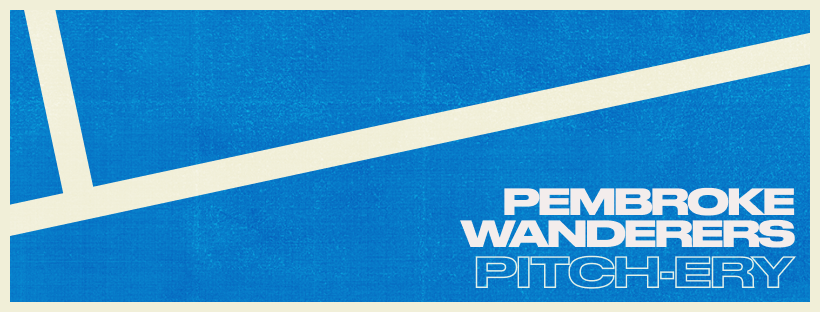Auto Pass rule – explained

The new Free Hit rule incorporating the Auto-pass
The auto pass is a mandatory experimental rule for 2009 ~ this means in effect that it comes into use for all teams from the start of next season.
Check out the explanatory video courtesy of our friends in Sydney.
Read also the “Rule Interpretation & Guidence with FIH Clarification”
author: Craig Gribble of New Zealand Hockey.
Rule Interpretation & Guidence with FIH Clarification
In the 2009 rulebook, the free hit rule has been re-worded. It now incorporates two variations on the old rule: the option to ‘auto’ or ‘self’ pass and the restriction when hitting the ball directly into the circle from the attacking 23 metre area.
Outlined below is the actual wording issued by FIH. Under each part of the rule, there is a guide to umpires and a brief commentary to provide some clarity. Please feel free to contact me (027 2211 492) if there are any aspects that require further explanation.
Note: In all cases below, when the term ‘free hit’ is used, the rule will also apply to side-line hit ins and long corners inside the attacking 23 metre area. Note also that the ‘auto pass’ can be used to start the game, or to re-start after a goal has been scored.
13.1 Location of a free hit:
a) a free hit is taken close to where the offence occurred.
‘Close to’ means within playing distance of where the offence occurred and with no significant advantage gained. The location from which a free hit is taken must be more precise inside the 23 metre area.
Commentary and guidelines: Around the field, the placement of the free hit has become more liberal. In particular when a team takes a free hit back from where the infringement occurred, a 10 – 20 metre tolerance may be appropriate. Clearly when the ball is taken ahead of the spot, then maybe a 5 metre tolerance is acceptable. Inside the attacking 23 metre area, free hits (and auto passes) need to be managed more closely.
b) a free hit awarded within 5 metres of the circle to the attack is taken at the nearest point 5 metres from the circle
Commentary and guidelines: Most turfs have the dotted line marked 5 metres from the circle edge. No attacking free hit (or auto pass) is allowed within this line and the circle edge. Instead, the ball needs to be taken directly back and outside the dotted 5 m line.
c) a free hit awarded outside the circle to the defence within 15 metres of the back-line is taken up to 15 metres from the back-line in line with the location of the offence, parallel to the side-line.
Commentary and guidelines: Using old terminology – “Take it up to the 16”
d) a free hit awarded inside the circle to the defence is taken anywhere inside the circle or up to 15 metres from the back-line in line with the location of the offence, parallel to the side-line.
Commentary and guidelines: If a free hit is awarded inside the circle, it can be taken anywhere from inside the circle (or straight up to “the 16”).
13.2 Procedures for taking a free hit, centre pass and putting the ball back into play after it has been outside the field:
a) the ball must be stationary
Commentary and guidelines: In many cases the ball will not be stationary. However, it needs to be made clear that the free hit (or auto pass) has been taken.
b) opponents must be at least 5 metres from the ball
If an opponent is within 5 metres of the ball, they must not interfere with the taking of the free hit or must not play or attempt to play the ball. If this player is not playing the ball, attempting to play the ball or influencing play, the free hit need not be delayed.
Commentary and guidelines: Allow play to carry on in the spirit of open, flowing hockey. Deal with players who interfere deliberately under misconduct. However, if a player chooses to ‘auto pass’ then they should not be permitted to try and manufacture a foul by running at the opposition who may not have finished retreating 5 metres. The ‘auto pass’ rule is intended to speed up the taking of free hits – not to create an opportunity for a manufactured foul.
c) when a free hit is awarded to the attack within the 23 metres area, all players other than the player taking the free hit must be at least 5 metres from the ball
Commentary and guidelines: Self-explanatory
d) the ball is moved using a push or hit
Commentary and guidelines: Self-explanatory
e) the ball must not be raised intentionally directly from the free hit
Commentary and guidelines: Self-explanatory
f) if the player taking the free hit is the next player to play the ball, the actions of taking the free hit and of next playing the ball must be two separate actions
Commentary and guidelines: This rule describes the ‘auto pass.’ It means that the auto pass needs to show clearly that the free hit (to ones self) has been taken. Therefore a player should attempt to make the ball stationary and pass to himself or herself, before say dribbling down the field with the ball. The temptation might be for players to carry on when the whistle goes without formally auto passing. This rule requires them to make the auto pass and their next action, two separate events.
g) before another player of the team which took the free hit is allowed to play the ball, the ball must move at least 1 metre
The ball does not have to move 1 metre before the player taking the free hit may play the ball again.
Commentary and guidelines: The movement of the ball one metre to a player of the same team (conventional pass) is now an established rule. However, it too has been liberalised. The movement of the ball one meter at a free hit allows for opposition players to compete for the ball more safely when contesting the ball at an overhead pass situation. However, note that when a player does an ‘auto pass,’ then the ball does not need to move one metre.
h) from a free hit awarded to the attack within the 23 metres area, the ball must not be played into the circle until it has traveled at least 5 metres or has been touched by a player of either team other than the player taking the free hit.
Commentary and guidelines: Under no circumstances may a player play the ball directly into the circle from a free hit (or auto pass) within the attacking 23 metre area. The ball must first have traveled (moved) 5 metres (conventional or auto pass) or be touched by another player of either team.
Posted by PWHC
Recent News
Join our Family Fun Day!
To celebrate the end of our hockey season, all members, Juniors and Seniors, are invited to our…
Pick Up A Stick @ PWHC
We at Pembroke Wanderers are starting a Pick Up A Stick programme in April and May, on…
Have you got your ticket for the Pitch-ery?
If you’ve played on our front pitch in Serpentine Avenue, you’ll know that little, tiny green parts…


